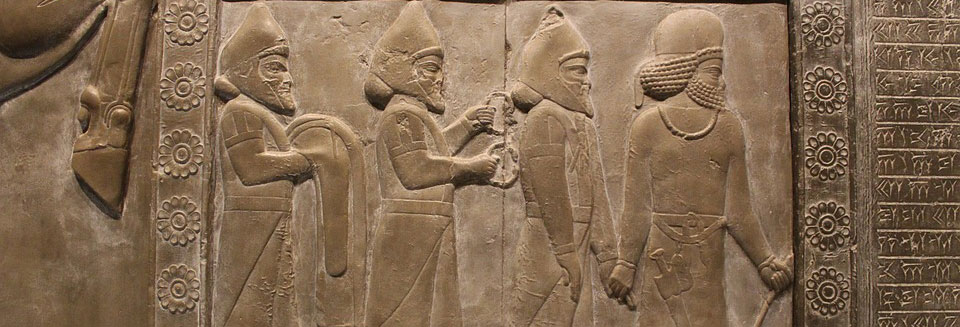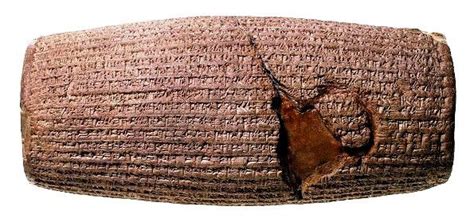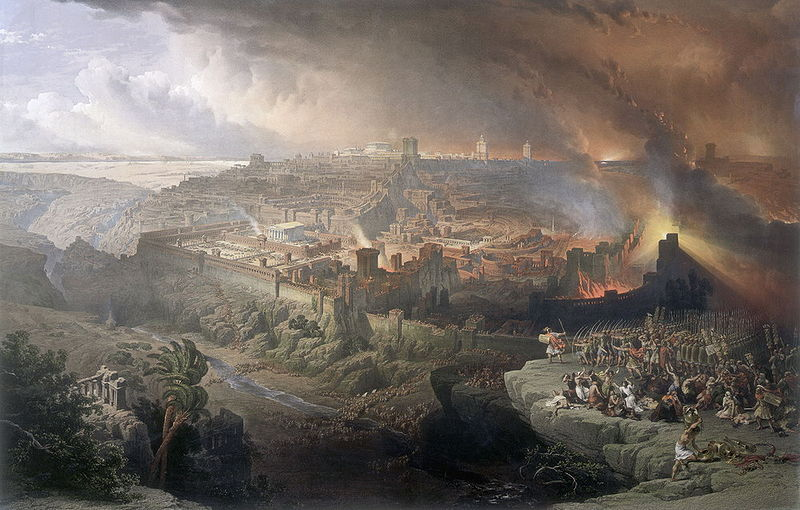The Seventy Weeks of Daniel -- An Interpretation of Daniel 9:24-27 (Part Three)
 Wednesday, July 22, 2020 at 02:04PM
Wednesday, July 22, 2020 at 02:04PM III. Daniel’s Seventy Weeks – Introduction and Background to Daniel 9:24-27

Daniel’s prophecy of the Seventy Weeks is one of the most intriguing passages in all the Bible. It is often described by commentators as among the most difficult passages to interpret in all the Old Testament. Many of our contemporaries understand this passage as a prophetic map to the end times. But I think the passage makes much more sense when understood as a messianic prophecy foretelling the coming of Jesus, the Messiah.
Yes, the passage does tell us much about the end times in a big picture kind of way. But it does so through the lens of Jesus’ work in fulfilling the six conditions set forth in verse 24 of the prophecy: finishing transgression, putting an end to sin, atoning for iniquity, ushering in everlasting righteousness, sealing both vision and prophet, and anointing a most holy place. All six conditions were accomplished by Jesus through the strong covenant he made with the many (i.e., the people of God whom the Father chooses to save). If Gabriel’s revelation to Daniel speaks to the end times (Daniel 9:20-27), it does so in the form of a messianic prophecy, foretelling with an uncanny accuracy the suffering and obedience of the one who fulfills it–the Lord Jesus.
Like me, many readers grew up in churches influenced by dispensationalism. We learned this passage well because the prophet Daniel supposedly foresees a time (the 70th and final week of the seventy) when Israel is back in the promised land, at or about the time the Gentile church is removed from the earth (the Rapture). The Rapture also marks the dawn of the so-called seven year tribulation period, during which the Antichrist (on this scheme, the one who makes a covenant with Israel) turns upon the Jews in their rebuilt temple in Jerusalem, leading to a final battle (Armageddon) which culminates in the return of Jesus. Although this view once dominated much of American evangelicalism, this interpretation is wide of the mark for several reasons we will address in the following.

Despite the difficulty and intrigue associated with Daniel’s “Seventy Weeks,” the passage can be properly interpreted if we develop the context in which it is given, as well as considering the broader biblical theology which underlies the prophecy.
The first matter we must tackle is the meaning and chronology of the Seventy Weeks to which Daniel refers. What are these weeks? When do the weeks begin, and when do they end? Are we to take the Seventy Weeks as a literal period of time, or are they better understood symbolically in light of the previous visions recorded earlier in Daniel?
I’m specifically thinking of the visions of four great empires found in Daniel 2 (Nebuchadnezzar’s dream of a metallic statue interpreted by Daniel), and Daniel 7 (a vision given to Daniel of four great and mysterious beasts). The four metals in Nebuchadnezzar’s statue and the four beasts in Daniel’s vision predict the rise of the four great empires of the ancient near-eastern world: the Babylonian, Persian, Greek, and Roman empires. These prior visions provide the context for the vision of the Seventy Weeks–a context often overlooked by those who see the prophecy as focusing on the time of the end, instead of upon the dawn of the messianic age.
The time-frame revealed by Gabriel to Daniel serves as the box top to the puzzle, if you will. How should we understand these Seventy Weeks? Why are they broken up into periods of “seven” weeks, “sixty-two weeks,” and then one “week?" When do the weeks begin? How long are they? and when do they end?
The answer to these questions is found by looking to the context given us by Daniel in the prayer which opens the ninth chapter (vv. 1-19). The context set forth in Daniel’s prayer is decisively covenantal and indicates that the vision of the Seventy Weeks given to Daniel is a direct answer to his plea for Israel in light of the realization that Israel’s seventy years of exile in Babylon were soon to come to an end (as predicted by the prophet Jeremiah). As Daniel cries out in repentance, pleading with YHWH to remember his covenant with Israel, the angel Gabriel immediately appears (vv. 20-23) and reveals the Seventy Weeks prophecy in verses 24-27. Any attempt to make sense of the Seventy Weeks apart from the context of YHWH’s answer to Daniel’s prayer will certainly miss the mark.

Daniel’s prayer–focusing upon the end of Israel’s exile after seventy difficult years in Babylon–is intended to remind to the people of Israel (on whose behalf Daniel is praying) of YHWH’s faithfulness in returning his people from exile back to the land of Judah as promised. YHWH is Israel’s covenant Lord who always keeps his word given to his prophets (i.e., Jeremiah). The prophecy of the Seventy Weeks is not intended to be a prediction of the dealings between Israel and Antichrist at the time of the end. Instead, it is intended to give the exiled Jews in Babylon the wonderful hope that they will indeed return to their land and rebuild the then destroyed temple of YHWH. But even as Gabriel reveals to Daniel that Israel’s exile is about to end (confirming Jeremiah’s prophecy), the Angel points beyond Israel’s current plight (exile in Babylon) to the dawn of that glorious messianic age for which Israel has longed.
As Gabriel is about reveal to Daniel, behind the seventy years which Israel (Judah) has endured in exile in Babylon, is a much greater period of exile–an exile from God’s presence when Adam and Eve were cast from Eden because of human sin and rebellion. When the Seventy Weeks are over, this greater exile will also come to an end. But as Gabriel now reveals, it will take the saving work of a Messiah to accomplish this. This end of exile is still future (to Daniel) which means the messianic age has both a beginning (the coming of Jesus) and an end (the second coming of Jesus). But there is absolutely nothing whatsoever in this prophecy about a future seven-year tribulation period, a rebuilt temple in Jerusalem at the time of the end, or an end times Antichrist, except that the Roman prince (Titus) who will desecrate the Jerusalem temple and bring about a terrible time of desolation serves as a type (a “forerunner”) of an end times Antichrist.
We will consider the Seventy Weeks decreed by YHWH in light of those often overlooked biblical passages which lay in the background of Gabriel’s revelation to Daniel. These passages would have been very familiar to Daniel, and the prophet would have made the immediate connection between Gabriel’s words, the prophecy of the Seventy Weeks, and these biblical passages, a connection which we may not be apt to make. But carefully considering these passages provides the context in which we should understand the number of years revealed by Gabriel (seventy weeks). This will take us to a discussion of Leviticus 25 and the Year of Jubilee to be celebrated in Israel in the fiftieth year after seven sevens of years (49) have elapsed. Keeping the 49 years followed by a jubilee year (the 50th year) in mind, we can look ahead and quickly figure out that seventy-sevens amounts to ten of these jubilee years followed by a final jubilee which is to be celebrated at the end of Seventy Weeks, (the ultimate jubilee, if you will).
The Jubilee Year grows directly out of Israel’s covenant with YHWH and its chief sign, the Sabbath. Sabbath observance was perhaps the most visible element of Israel’s covenant with YHWH–the people work for six days and rest on the Sabbath. Israel’s exile may be about to end (which is great news for Daniel and the exiles then living in Babylon), but the even better news coming from Gabriel is that one day there will be an ultimate jubilee when all of God’s people–those redeemed by the one who makes a strong covenant–will at long last enter their Sabbath rest in the presence of YHWH (the box top to the puzzle). The greater exile will come to an end because the guilt of human sin has been dealt with once and for all.
In verses 20-27 of Daniel 9, we learn that the time of exile is about to end. Daniel is very concerned for the future of Jerusalem and the people of God, Daniel confesses his sins and that of his people (vv. 1-19). At the end of this prayer, Gabriel appears to Daniel with an answer to the final petition offered by Daniel in verse 19: “O Lord, hear; O Lord, forgive. O Lord, pay attention and act. Delay not, for your own sake, O my God, because your city and your people are called by your name.” As Daniel prays for Jerusalem and the people of God in exile, YHWH hears and sends Gabriel with YHWH’s answer. We read in verses 20-21, “while I was speaking and praying, confessing my sin and the sin of my people Israel, and presenting my plea before the Lord my God for the holy hill of my God, while I was speaking in prayer, the man Gabriel, whom I had seen in the vision at the first, came to me in swift flight at the time of the evening sacrifice.” Daniel was able to immediately identify this angelic presence as that of Gabriel from the vision given Daniel in chapter 7.
The content of YHWH’s answer to Daniel’s prayer is the prophecy in verses 24-27. We read in verses 22-23, “[Gabriel] made me understand, speaking with me and saying, `O Daniel, I have now come out to give you insight and understanding. At the beginning of your pleas for mercy a word went out, and I have come to tell it to you, for you are greatly loved. Therefore consider the word and understand the vision.’” Daniel has spent most of his life as an exile in Babylon serving both Nebuchadnezzar and Cyrus (two of the greatest men of that age). He was given extraordinary wisdom and insight by YHWH to preserve him during this time. When Daniel intercedes for his people (almost acting as a priest), YHWH will graciously give to his servant Daniel a panoramic view of what the future holds for Israel, Jerusalem, the temple, and beyond. This revelation centers in the person and work of a coming Messiah–Jesus. In Daniel’s prayer we see the words of Jesus in Matthew 6:8 on display. “Your Father knows what you need before you ask him” [Steinmann, Daniel, 451]. God called Daniel to this life in exile, and in his grace and mercy, gives Daniel an answer to his pleas for Jerusalem. Daniel will see Israel’s future and the messianic age.
The “Seventy Weeks” vision reveals that God has already determined the fate of his people and Jerusalem. In verse 24, Gabriel tells Daniel, “seventy weeks are decreed about your people and your holy city, to finish the transgression, to put an end to sin, and to atone for iniquity, to bring in everlasting righteousness, to seal both vision and prophet, and to anoint a most holy place.” Gabriel reveals two important facts to Daniel. First, Daniel is given the precise time-frame covered in the vision--seventy-sevens. Second, Gabriel spells out those things which must be accomplished before the Seventy Weeks are complete, namely the six things to be accomplished by the covenant maker mentioned in verse 27: finishing transgression, putting an end to sin, atoning for iniquity, bringing in an everlasting righteousness, sealing vision and prophet, and anointing a most holy place. When these things are accomplished, the prophecy will have run its course.

There are two additional matters to consider in light of Gabriel’s revelation in verse 24. The first is that two important biblical passages lay behind Gabriel’s use of Seventy Weeks. A second thing we must consider are the theological themes to which these two passages speak, namely covenant, exile, jubilee, and Sabbath. As we have seen when considering Daniel’s prayer (vv. 1-19), the number seventy was used by Jeremiah in vv. 11-12 of the 25th chapter of his prophecy in reference to Israel’s time of exile. “This whole land shall become a ruin and a waste, and these nations shall serve the king of Babylon seventy years. Then after seventy years are completed, I will punish the king of Babylon and that nation, the land of the Chaldeans, for their iniquity, declares the Lord, making the land an everlasting waste.” According to Jeremiah’s prediction, Israel’s time of exile in Babylon is seventy years. This limited period of exile is YHWH’s covenant curse upon Israel because the people of Judah rebelled and disobeyed their covenant Lord though idolatry and unbelief [Kline, “The Covenant of the Seventieth Week"].
Aware that the seventy years of exile foretold by Jeremiah were coming to an end, Daniel prays for his people, pleading with YHWH to remember his covenant promise. But as becomes clear in Daniel 9:24-27, Gabriel expands this time period from seventy years of exile (for Judah) to seventy “sevens” of exile decreed by God. In this prophecy, Gabriel is speaking of time of exile much longer and quite different from that which Judah faces in Babylon and which is about to end. The Jewish exiles are about to return home and rebuild the city and temple. But a greater exile remains. This is the exile of the sinful and rebellious human race from the presence of YHWH. This far-greater exile will also come to an end after “seventy weeks.”
The other biblical passage which is in the background of Gabriel’s revelation to Daniel is Leviticus 25 and the institution of the Jubilee Year in Israel once the people possessed the promised land (the conquest). In Leviticus 25:8–12, we read the following: “You shall count seven weeks of years, seven times seven years, so that the time of the seven weeks of years shall give you forty-nine years. Then you shall sound the loud trumpet on the tenth day of the seventh month. On the Day of Atonement you shall sound the trumpet throughout all your land. And you shall consecrate the fiftieth year, and proclaim liberty throughout the land to all its inhabitants. It shall be a jubilee for you, when each of you shall return to his property and each of you shall return to his clan. That fiftieth year shall be a jubilee for you; in it you shall neither sow nor reap what grows of itself nor gather the grapes from the undressed vines. For it is a jubilee. It shall be holy to you. You may eat the produce of the field.”
Gabriel’s choice of seventy “sevens” clearly reflects the jubilee pattern of Leviticus 25–a pattern which reflects the covenant YHWH made with Israel at Mount Sinai to possess the land of promise. The people of Israel counted seven sevens of years, so that the fiftieth year was declared a jubilee year. When the Jubilee Year came, liberty was proclaimed throughout the land during which time the land was allowed to rejuvenate, all monetary debts were forgiven, slaves were set free, and God promised to bless both the land and his people. While this was commanded in Leviticus 25, there is no record elsewhere in the Old Testament of the Jubilee Year actually being observed. But the Jubilee Year is clearly what is in view when Gabriel speaks of seventy “sevens,” not just seven sevens.
When the Jubilee is kept in mind, it becomes clear that the seventy sevens decreed by God are ten of these jubilee cycles–ten being an ideal number when the final jubilee is realized (after the seventy sevens decreed by YHWH). No more debts will remain, all slaves will have been freed, and the land will be renewed so that it might flourish without ill-effects of the curse. Add to this the fact that the number seven has an obvious connection to the Sabbatical pattern (six days of work followed by a seventh day of rest), we are led to the inescapable conclusion that the Seventy Weeks of Daniel 9:24-27 are hardly a random number. Instead they reflect a number of important redemptive-historical themes associated with Israel’s history and expectation (covenant, exile, Sabbath, jubilee) [Kline, “The Covenant of the Seventieth Week,”]. These themes must be kept in mind as we interpret the prophecy given Daniel. When we do so, the prophecy of the Seventy Weeks is clearly a vision of God fulfilling the promised blessings by removing the ground for the covenant curse–human sin. This indicates that the prophecy is overtly covenantal and messianic in nature and points to an age after the decreed time has passed–the ultimate Jubilee and the everlasting Sabbath. To put it another way, the seventy sevens decreed by God indicates that at the end of this period of exile (when the six conditions having been fulfilled), the ultimate Jubilee will arrive along with the eternal Sabbath rest promised to the people of God.
The question which now must be addressed is, how are we to understand the seventy sevens–as literal years (70 x 7 = 490), or as a symbolic period of time? For many years, I held that Daniel was referring to the seventy sevens as literal–a span of seventy sevens of years minus the seven years of the seventieth week–the total time being 483 years. If you start with the coming of Jesus (about 30 AD) and work backward, you come up with a date about 453 BC (very close in time to the ministries of Ezra and Nehemiah). This is important because in verse 25, Gabriel tells Daniel exactly when the seventy weeks begin. “Know therefore and understand that from the going out of the word to restore and build Jerusalem to the coming of an anointed one a prince there shall be seven weeks.” Assuming that the weeks of Daniel are literal years, we are very close in time to the decree made by the Persian king Artaxerxes to Ezra to rebuild the temple in 458 BC.
But as we discover throughout the prophecy of Daniel, Ezra, and Nehemiah, the original decree allowing the Jews to leave Jerusalem and return to rebuild Jerusalem and temple as foretold by Jeremiah (and hinted at in Daniel 1:21) was given by Cyrus in 538 BC, not the decree of Artaxerxes in 458. This means the 490 years do not reflect a literal period of time, since the period of time in view is longer than 490 years. This fact pushed me to consider a symbolic reckoning of the seventy sevens [Steinmann, Daniel, 452-465]. According to Gabriel, the seventy weeks decreed begin when Cyrus issues his decree in 538 BC. Clearly, this is the event which commences the seventy weeks, not the later decree by Artaxerxes.
Although this point is easy to overlook, those who insist upon a literal interpretation of the 490 years–so that the years decreed begin in 458/445 BC (depending upon your view)–and then work ahead to Jesus’ messianic mission coming to its end about AD 30, have already violated their stated method of interpretation (understanding the prophecy “literally”) because Gabriel never refers to “years” but to “weeks” [Steinmann, Daniel, 445]. The moment you assume that the seventy “weeks” are actually “years” (because it is rather obvious Jerusalem was not rebuilt seventy weeks after Gabriel’s prophecy), you have already moved beyond a literal interpretation [Steinmann, Daniel, 452].
In light of the preceding, I think it clear that Gabriel is using the word “weeks” in a symbolic way, especially when we consider that the numbers “seven” and “seventy” reflect significant theological themes well-known to the people of Israel: exile, Sabbath, and jubilee. In this prophecy of the Seventy Weeks then, Daniel is given a panoramic vision of the future course of redemptive history which transcends and explains the original meaning of these things as understood by the Jews of his day. Gabriel’s vision reveals that when the seventy “sevens” have run their course all of the six things accomplished by the covenant maker of verse 27 will bring about an end of the exile of his people, and usher in the ultimate Jubilee and the eternal Sabbath. The point of the prophecy of the Seventy Weeks is that a Messiah is coming, and he will accomplish everything necessary for all of God’s covenant promises to become a reality as expressed in the vision given the apostle John in Revelation 21:9-27.
When the numbers are seen as symbolic and then viewed against the backdrop of the four great empires predicted in the earlier visions of Daniel 2 and 7, the prophecy comes into very sharp focus. Gabriel speaks of the coming of a “anointed prince” after a specified time, “there shall be seven weeks.” These seven weeks very likely point us the ministry of Ezra, who in 445 BC will lead the people of Judah in the rebuilding of the temple and the renewal of the sacrifices. Ezra comes from a priestly family and can trace his lineage back to Aaron (Ezra 7:1-5). The word translated as “prince” is used elsewhere by Daniel of a great leader or priestly figure (cf. Daniel 11:22) [Baldwin, Daniel, 189]. This was also the era of Nehemiah (who rebuilt Jerusalem and its walls) and the prophet Malachi, the author of the final canonical Old Testament book. After Malachi’s prophecy, YHWH fell silent until the Angel Gabriel appeared to Mary to announce that she was pregnant with the Messiah through the power of the Holy Spirit. The first “seven weeks” then, run from 538 BC until the time of Ezra, about 445 BC.

The second group of weeks (sixty-two) mentioned by Gabriel is found in verses 25-26. “Then for sixty-two weeks it shall be built again with squares and moat, but in a troubled time. And after the sixty-two weeks, an anointed one shall be cut off and shall have nothing. And the people of the prince who is to come shall destroy the city and the sanctuary. Its end shall come with a flood, and to the end there shall be war. Desolations are decreed.” Since the second group of weeks (the sixty-two weeks) commence with the rebuilding of Jerusalem (it shall be rebuilt) and run until the coming of an anointed one who will be cut-off and shall have nothing, we are on solid ground by interpreting this period of time to begin in the days of Ezra, and end with the messianic ministry of Jesus, the “anointed one” who, in his crucifixion for our sins, was “cut off” (i.e., put to death), immediately after the sixty-two weeks end [Young, Daniel, 206].
We should take note of the fact that the verb used here (“cut off”) is kārat, which is used in Genesis 15:10, 18 in regard to the covenant ratification ceremony when the animals were cut in two in Abram’s dream. The animals were “cut off” (i.e., killed) [Baldwin, Daniel, 190]. A similar verb is used by Isaiah to refer to the suffering messianic servant yet to come (Isaiah 53:8). “By oppression and judgment he was taken away; and as for his generation, who considered that he was cut off out of the land of the living, stricken for the transgression of my people?” In light of the larger purpose of the Seventy Weeks prophecy, there can be little doubt that it is Jesus who was “cut off” as a means, in part, of accomplishing the six things which bring the seventy weeks to their fulfillment [Greidanus, Preaching Christ from Daniel, 304-305].
That this sixty-two week period brings us from the days of Ezra (about 445 BC) to the time immediately before the public ministry of Jesus (30 AD), is also evident when Daniel speaks of a “prince to come” who, as a consequence of the coming of the Messiah, will destroy the city–i.e., Jerusalem, at or about the time the anointed one is “cut off” (crucified) [Young, Daniel, 207]. The historical record is clear that Roman armies, led by Titus, destroyed Jerusalem and the temple in A.D. 70. The people of Israel subsequently were driven to the ends of the earth in the great Diaspora. Jesus foretold of this in Luke 21:20, using language taken directly from Daniel 9:26. “But when you see Jerusalem surrounded by armies, then know that its desolation has come near.” What Daniel foretold, “its end shall come with a flood, and to the end there shall be war. Desolations are decreed,” is fulfilled by the Roman siege of Jerusalem in AD 70 with a frightening accuracy [Greidanus, Preaching Christ from Daniel, 305]. Desolation decreed–indeed.
The first two groups of weeks then take us from Cyrus’ decree in 538 BC until the time of Ezra about 445 BC (the “seven weeks”). The “sixty-two weeks” take us from Ezra up to the coming of Jesus (30 AD). After the sixty-two weeks end, comes the cutting off of the Messiah and the Roman sack of Jerusalem and the destruction of the temple in of AD 70. But Gabriel tells us that there remains “one week,” i.e., the seventieth week, and this week centers upon one who makes a strong covenant with the many. It is to this final week of Daniel’s prophecy we turn next time.
When YHWH hears Daniel’s prayer and sends Gabriel to reveal to Daniel the prophecy of the Seventy Weeks, we are give a truly remarkable vision of the future of Jerusalem and YHWH’s temple (both will be rebuilt). The seventy years of Israel’s exile will soon come to an end. But a greater exile remains, and Gabriel explains how YHWH will put an end to it through the coming Messiah, who will finish transgression, put an end to sin, atone for iniquity, bring in an everlasting righteousness, seal vision and prophet, and anoint a most holy place. But the Messiah (Jesus) will be cut-off (crucified) and the fourth and fiercest empire foretold in the visions in Daniel 2 and 7 (Rome), will once and for all leave Jerusalem and the temple desolate. But still, the covenant maker prevails, so the once the Seventy Weeks have run their course, we will enter the ultimate Jubilee; we owe no more debt to God due to our sin (it has been forgiven), we are set free from slavery (to sin and the sinful nature), and the heaven and earth will be restored (the land of promise in Palestine will be extended to include the whole earth). And then at last, we will enter our eternal Sabbath rest in the presence of God because our time of exile has come to an end.
This is what Gabriel reveals to Daniel in the prophecy of the Seventy Weeks–a Messiah (whom we know to be Jesus) who frees us from sin and the curse (exile) and who grants us eternal rest in the presence of the Father–the ultimate Jubilee and the eternal Sabbath.
"The Seventy Weeks of Daniel-- An Interpretation of Daniel 9:24-27" (Part Two)
"The Seventy Weeks of Daniel -- An Interpretation of Daniel 9:24-27" (Part One)


Reader Comments